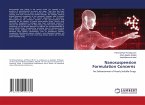Following the administration of biopharmaceuticals into human body, the formation of antidrug or neutralizing antibodies and other general immune system effects (including allergy, anaphylaxis, or serum sickness) are of clinical concerns regarding therapeutic efficacy and patient safety. For example, drug-induced neutralizing antibodies to erythropoietin (EPO) result in pure red cell aplasia, whereas drug-induced/acquired anti-factor VIII antibodies worsen the pathology associated with hemophilia. The possible mechanism, prediction and reduction of immunogenicity produced by biopharmaceuticals are overviewed. This book encompasses the clinical concerns of immunogenicity produced by various biopharmaceuticals such as growth hormone, insulins, granulocyte-macrophage colony-stimulating factor, interferons, megakaryocyte differentiation and growth factor, EPO, factor VIII, factor IX, acid alpha-glucosidase and glatiramer acetate including their biosimilar versions wherever possible. With this coverage of very interesting informations, this book is an essential reference for researchers in pharmaceutical industry who develop biopharmaceutical products.








